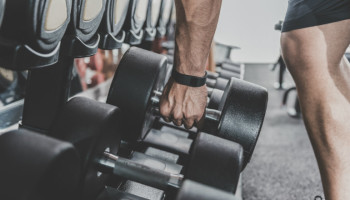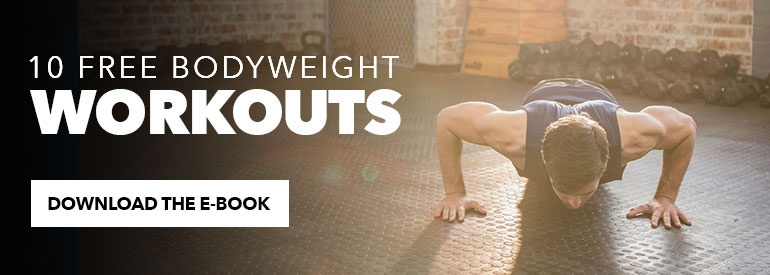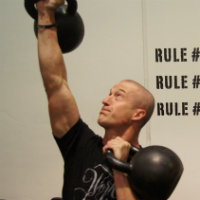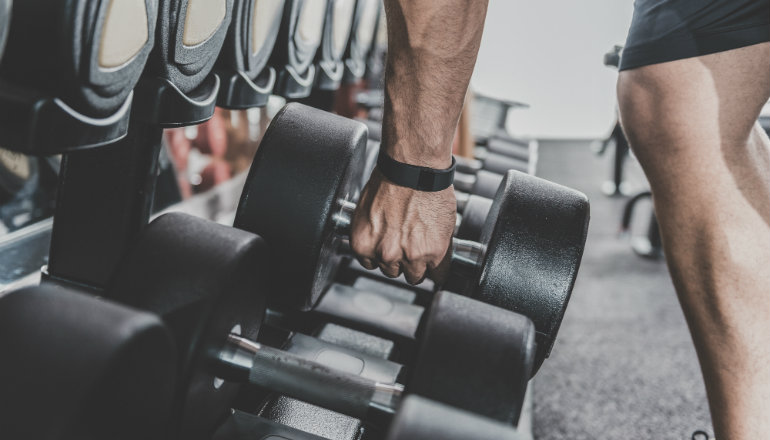 Reading Time: 6 minutes
Reading Time: 6 minutesThe running joke within fitness circles is that Monday is International Bench Press Day. This comes from the days when bodybuilding ruled the roost and people split their workouts into specific days for certain body parts.
What makes this funny, when viewed through a strength lens, is that the muscles that push only make up about 30% of the muscles of the body. While a big chest may look imposing, it is the muscles of the back and legs that account for 70% of our musculature.
In my last article, I covered the best pressing exercises. This time, it’s all about the best upper-body pulling movements.
How to Determine the Best Pulling Exercises
The muscles of the upper back take care of a few big jobs for us:
- First, we have support muscles that run along our spine, protect our posture, and help us stand upright.
- Thanks to our muscles, we can perform two different types of pulling motion, usually referred to as horizontal and vertical pulling.
- We also have muscles that raise and lower our shoulders.
These four things are accomplished by four primary muscle groups: the spinal erectors, the lats, the rhomboids, and the traps. Effective training for the pulling muscles must hit all these areas, or as many of them as possible, to truly be considered a “best” exercise.
Unlike with the pressing exercises, I won’t separate the pulling exercise into category by method used, as the barbell and kettlebell options will be very similar. There is, however, one exception to this and that is the renegade row.
The Renegade Row
The renegade row is an excellent pulling exercise for many reasons. It features shoulder stability in both open and closed chain, anti-rotation, trunk stability, and hip stability, along with the obvious pulling motion. However, it is best left as a core exercise thanks to all these factors as the limiting piece in the renegade row will always be your ability to stabilize your midsection, not the weight being rowed.
As a core exercise, the renegade row is a fantastic addition to your training, but as a pulling exercise you just won’t be able to use enough weight to overload the pulling muscles.
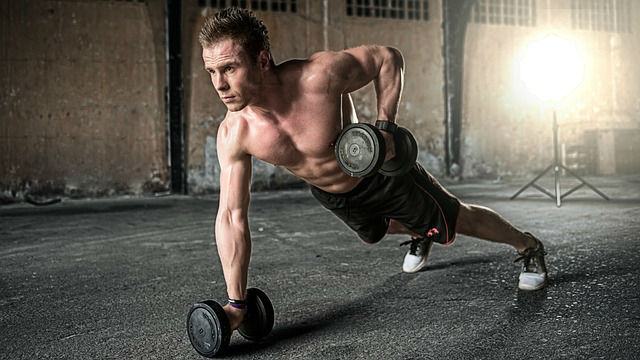
The Barbell Bent-Over Row
The barbell bent-over row is a staple of all old-school strength trainers, but it has fallen out of favor more recently. Perhaps, like the bench press, people believe it is “non-functional.” That’s a great shame as no other exercise allows you to overload the horizontal pulling muscles as effectively as the bent-over row.
That being said, strength expert Charles Poliquin dislikes the bent-over row due to the isometric stress it places on the lower back. He believes when the load gets truly heavy the exercise places too much stress on the lower back to be safe. His belief is that the one-arm dumbbell row done using the free hand for support on a bench is superior. But I have to say that no matter how heavy I do this exercise with the dumbbell, I never feel it to have the same overall benefit as barbell rows.
Note that this video depicts a supinated (“palms up”) grip being used for the bent over row. A pronated (“palms down”) grip is more commonly used, but neither is right or wrong.
The Bench-Supported Row
There is a happy medium between barbell bent-over rows and one-arm dumbbell rows — the bench-supported row.
The bench-supported or prone row is a staple of rowers and other athletes like wrestlers who need massive pulling power. With the lower back protected, thanks to the use of the bench for support, coupled with the use of the barbell, this exercise can be performed heavy safely.
Many people will be surprised by exactly how weak their upper back is. The sign of this will be the inability to complete the pull all the way to the underside of the bench. If you’ve got access to a bench for rows, adding this exercise into your plan will be a powerful addition to your training.
The Pull-up
One of the reasons rows have perhaps fallen out of favor is that the pull-up is somehow seen as more functional. The problem with that belief is that pull-ups are usually performed incorrectly and their true functionality is decreased.
Many have taken one form of the exercise — the chin up — and adhered to it far too literally. Just because it says “chin” up doesn’t mean you only need to go as high as having your chin break the plane of the bar. At my gym, the only reps we count are genuine chest-to-bar reps. The real beauty of the pull-up only occurs when the chest touches the bar.
Try this little experiment:
- Hold an imaginary pull-up bar and pull it so that your chin clears your hands.
- Notice how little you feel in your upper back.
- Now, pull your chest to that imaginary bar and notice how hard the muscles of the upper back are forced to contract.
The benefit of the pull-up as an overall back exercise is that the lats border the spine. They act not just to pull the arms from overhead toward the body, but also to brace the spine — they are one of your core stabilizers.
The Deadlift-and-Shrug
Training the spinal erectors is a relatively simple task. You need to either resist being folded in half or stand up from being bent in half. That sounds a lot like deadlifting to me, as well as all the possible variants.
But that still leaves the traps out of the equation. Like the lats, the traps are a spinal stabilizer for the top third of the spine. Along with building the glutes and lower back, having big traps is a sign of a strong body.
Deadlifting on its own won’t really develop the traps because the movement doesn’t involve raising or lowering the shoulders. The best way to hit all the spinal erectors/stabilizers in one movement is the partial deadlift-and-shrug.
Given that you’re aiming to train the lower back and traps, you don’t need to deadlift from the floor. Pulling from a rack set just below the knees is the best option here. Super heavy weights are possible with this movement and will quickly add size and strength.
A Workout with the Best Pulling Exercises
If you want to hit all possible angles and requirements of a strong back, you need both horizontal and vertical pulling, as well as spinal stability work. It might be tempting to put the rack pull and shrug first in your training session, but if you go heavy, your grip and lower back will be too fried to do much else.
I normally recommend people do pull-ups first as they’re the most difficult and can’t be moderated by taking weight off if you’re tired. Follow the pull-ups with bench-supported rows. These allow you to use the most weight and save your lower back for the heaviest exercise. Finish with deadlift-and-shrugs until your grip is done.
Try this combination for a great pulling workout:
- Chest-to-bar pull-ups: Perform 5 sets of as many full reps as possible. Only strict reps count, no kipping, and all reps from a dead hang position (arms straight). Rest two minutes between sets to give you the most reps possible.
- Chest-supported rows: Perform 5 sets of 6-10 reps. You’ll find rowing tends to feel better with slightly higher reps. I recommend roughly double the number you’d use for pull-ups. Accentuate a slow lowering phase, allowing for at least a two-count on the way down before starting the next rep. Rest two minutes between sets.
- Deadlift-and-shrugs: Like the rows, this move is possible to perform for slightly higher reps as the traps seem to respond better. Perform 4 sets of 6-10 reps. One rep includes both the partial deadlift plus the shrug. For an added challenge to the upper back, perform these with a snatch width grip. Rest two to three minutes between sets.
